This is an extension of the topic tackled in a previous Composition post, because I felt it deserved a closer examination. So join me as we dive bravely into the seedy underworld of the cliché again.
The word itself has distinctly negative connotations, doubly so when there’s any connection whatsoever to the Art World (which is a peculiar-looking, off-balance planet that changes its own orbit just to remain unpredictable.) If someone looks at something that you’ve done and uses the word “cliché,” chances are it’s not a compliment. Combined with the artistic desire for originality, this can be enough to push someone into previously unexplored creative realms.
There’s nothing inherently bad about this, and indeed, it can occasionally lead to something really interesting. But not by itself. What should be examined is exactly why someone would want to do this, and what exactly they are trying to accomplish. Yes, there’s a lot of emphasis on doing something unique – you become the only person known for this, and the artistic style becomes synonymous with your name. This is a well-established method of garnering fame, income, and a fanbase, but it’s one of those things that gets misinterpreted very often – it’s not the only set of factors ever involved, and nobody seems to have any figures for how often it doesn’t work. Art isn’t just about doing something different, especially not when you’re hoping to accomplish any recognition for it; there also has to be the patron, the person (usually a lot of them) who gets a connection with what you do, who finds the shared spirit, who understands the mood you’re trying to evoke, who gets it. This is almost the exact opposite of individuality, even when it’s just a select few, an elite following. For someone to like your work, there needs to be a certain level of social interaction – not in the form of shaking hands or accepting a Friend request, but in the form of someone getting a positive response from your creation.
There are a lot of people who never seem to recognize this, who pursue individuality to the point of breaking down whatever social interaction is to be had – they create confusing, scattered, unrecognizable works that avoid a resemblance to anything else, including whatever kindred spirit they might have evoked from the viewer. True enough, they have avoided clichés, and derivative works, and thus established their uniqueness – but is that all that was desired? Does this mean anything, to anyone? Or is it just neurotic overreaction?
As indicated in the earlier post, clichés exist largely because something has become inherently recognizable – the empty playground swing that represents lost childhood, the monochrome photo of a smoking young woman in a café. They’re expressive – so readily, in fact, that they can be overused, which is how they became clichés in the first place. And it’s certainly true that if the viewer sees anything as a cliché, they’re not likely to possess a positive reaction to it. But we also can’t abandon every last vestige of recognizable elements in the obsessive desire to leave this epithet behind. What people like about art is the positive elements they find, not the mere lack of negative elements, or even the originality of the approach. Randomness, like paint from an overturned bucket or the leaf litter of the forest floor, is unique; obviously, something more is needed.
Quite often, what works is the balance point: the method or style that’s rare, combined with an ability to strike that common chord with the viewer. Don’t look at me, I make no claims of having accomplished this at all, and am not terribly motivated to either. A lot depends on what the goal really is. If anyone does anything at all that they show, to even just one other person, they’re looking for approval, and there’s nothing wrong with this. But approval can come from a lot of different things, and sometimes, it’s doing something very common. Current styles in just about anything relate directly to conformity, the desire for people to connect with as many others as possible, and this means you can occasionally make a lot of money by being able to provide this. Sometimes people want to see something dependable, even predictable – tally up the number of films you’ve seen with happy endings against those without. The things that spark our emotions are mostly very simple, as any advertiser will tell you – and hearing that will put countless artists on the defensive: “Don’t even try associating me with commercial advertising!” Such a perspective can be damaging if taken too far, because the human traits that the advertiser manipulates are the same traits to give an appreciation of anything artistic or creative, they just need to be summoned in a different way. Think of it from the standpoint of a chef; you can start with the ubiquitous base ingredients such as chicken or potatoes, but it’s what you do with them that matters. And to continue this analogy, fast food places do not exist because people solely crave originality.
It is important to recognize that ego likely plays a role in all this: “I want to start my own style.” Yet, this is no different from opinion, and everyone has one. What we want isn’t our own style, but for others to look at it and say, “Wow, what a cool style!” Or perhaps, even just, “Sure, I’ll buy that.” Ego is always stroked by others. While we might like to think others will come to us, it’s probably more useful to think in terms of bringing to others what they want.
Some of my most appreciated images aren’t unique, and some of them are downright trite – it’s not the originality at all, but just the emotions that are invoked, perhaps, “I want to be there,” or, “Those colors are gorgeous.” Other images are unique, in limited ways, by showing atypical angles or details, surprising people while still showing them mundane (sometimes even creepy) subjects. I’ll never claim to be accomplished at it, and I don’t do the artsy thing often, but I still get compliments on my work. Many of those would never have been forthcoming if I worried way too much about being truly original.
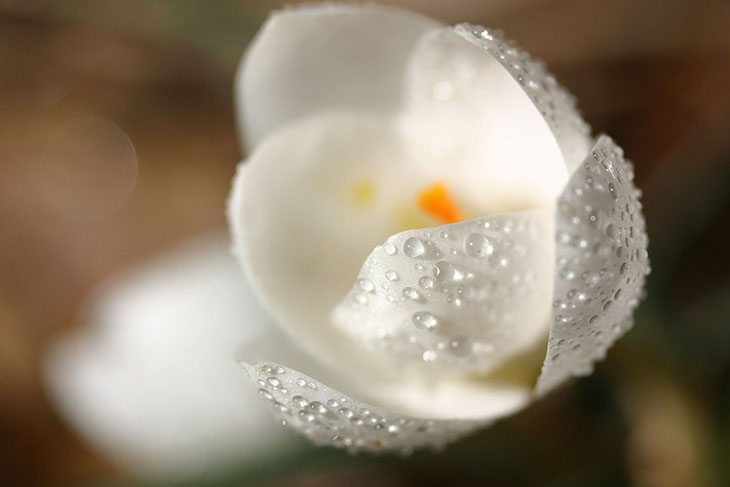




















































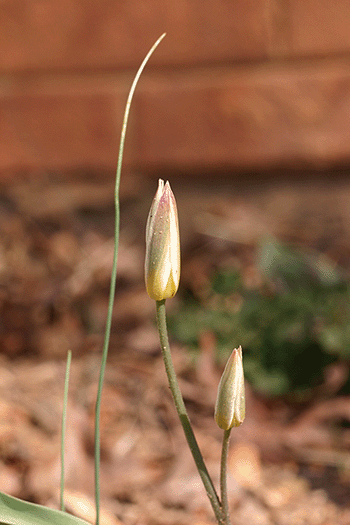 About a week ago, I noticed that another of The Girlfriend’s Younger Sprog’s flowers was of the type that opens each morning (when the conditions are right,) and started planning to try
About a week ago, I noticed that another of The Girlfriend’s Younger Sprog’s flowers was of the type that opens each morning (when the conditions are right,) and started planning to try 
 Today was apparently a great day for the arachnids to venture out. At times, the light was just right and the yard could be seen crossed by numerous strands of web from the spiders ballooning to new locations, and I actually had two different species suddenly appear on my arms – dog knows how many might have landed on my shirt where I couldn’t feel them (or my hair – I said that just to creep you out, even though it’s as likely as anyplace else.) The butterfly bush, sprouting just two new leaves of the season, was heavily rigged with lines from this little spud, some species of Theridiidae I believe. Likely the same species
Today was apparently a great day for the arachnids to venture out. At times, the light was just right and the yard could be seen crossed by numerous strands of web from the spiders ballooning to new locations, and I actually had two different species suddenly appear on my arms – dog knows how many might have landed on my shirt where I couldn’t feel them (or my hair – I said that just to creep you out, even though it’s as likely as anyplace else.) The butterfly bush, sprouting just two new leaves of the season, was heavily rigged with lines from this little spud, some species of Theridiidae I believe. Likely the same species 


 It will probably help if I explain what you’re seeing here, since it’s an odd angle and much is obscured. The most noticeable aspect is the pale, dimpled abdomen of a crab spider, most likely a white-banded crab spider (Misumenoides formosipes) – its cephalothorax (head) is partially hidden behind the butterfly it is gripping. You’re seeing the butterfly tail-first from below, the abdomen out-of-focus in the center of the shot since I was after the spider; one wing goes into the top right corner, the other down the left side. Not the best illustrative angle, which may be why I never bothered to feature the images back when I got them, but there’s a real limit in many situations. The spearmint plants were not very tall, and to get a perspective that showed the spider at all required shooting almost straight up from flat on the ground, with no opportunities for other angles. The lighting is deceiving, since it comes solely from the flash – in ambient sunlight this would have been in deep shadow. Trying for anything else might have resulted in disturbing the subjects, which could have made the spider discard its meal and scamper for cover.
It will probably help if I explain what you’re seeing here, since it’s an odd angle and much is obscured. The most noticeable aspect is the pale, dimpled abdomen of a crab spider, most likely a white-banded crab spider (Misumenoides formosipes) – its cephalothorax (head) is partially hidden behind the butterfly it is gripping. You’re seeing the butterfly tail-first from below, the abdomen out-of-focus in the center of the shot since I was after the spider; one wing goes into the top right corner, the other down the left side. Not the best illustrative angle, which may be why I never bothered to feature the images back when I got them, but there’s a real limit in many situations. The spearmint plants were not very tall, and to get a perspective that showed the spider at all required shooting almost straight up from flat on the ground, with no opportunities for other angles. The lighting is deceiving, since it comes solely from the flash – in ambient sunlight this would have been in deep shadow. Trying for anything else might have resulted in disturbing the subjects, which could have made the spider discard its meal and scamper for cover.

 I even took a quick look at the images I’d gotten soon after moonrise, when it still wasn’t free from obscuring trees, and there’s no indication of the peak in those either, so it seems sunset on that peak occurred while the moon was someplace below my horizon. At least I tried.
I even took a quick look at the images I’d gotten soon after moonrise, when it still wasn’t free from obscuring trees, and there’s no indication of the peak in those either, so it seems sunset on that peak occurred while the moon was someplace below my horizon. At least I tried.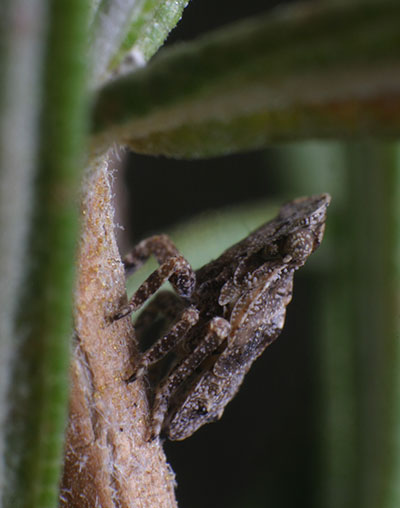 Shocked as I am to report it, the calendar event of the vernal equinox and the weather coincided quite well – the skies cleared and the temperature got into the twenties (or the seventies, if you prefer,) so I did indeed get out to chase a few spring subjects. It was exceedingly few – it’s still a little early for spring in North Carolina, and more so with the temperature fluctuations we’ve had this year, but there were a couple of things to be found. The most interesting one is shown here, having attracted my attention by waggling when I was doing a close examination of the rosemary bush for the resident green lynx spiders. If it had held still I would have missed it easily, since it’s but a few millimeters long and wonderfully camouflaged as a dried rosemary leaf. I have yet to identify this, other than as a ‘leafhopper,’ which really doesn’t narrow things down too much, but I can at least pronounce it a juvenile, due to the undeveloped wings.
Shocked as I am to report it, the calendar event of the vernal equinox and the weather coincided quite well – the skies cleared and the temperature got into the twenties (or the seventies, if you prefer,) so I did indeed get out to chase a few spring subjects. It was exceedingly few – it’s still a little early for spring in North Carolina, and more so with the temperature fluctuations we’ve had this year, but there were a couple of things to be found. The most interesting one is shown here, having attracted my attention by waggling when I was doing a close examination of the rosemary bush for the resident green lynx spiders. If it had held still I would have missed it easily, since it’s but a few millimeters long and wonderfully camouflaged as a dried rosemary leaf. I have yet to identify this, other than as a ‘leafhopper,’ which really doesn’t narrow things down too much, but I can at least pronounce it a juvenile, due to the undeveloped wings.
 I discovered the evidence of a recent molt, likely today’s, on the underside of a nearby rosemary leaf. The image below illustrates the scale fairly well, since that’s my fingertip in the background, but also visible are the white spheres that can be found on the leaves – whether these really are what decorates the leafhopper, or its camouflage just resembles this, I am unable to say. Just full of info today, aren’t I?
I discovered the evidence of a recent molt, likely today’s, on the underside of a nearby rosemary leaf. The image below illustrates the scale fairly well, since that’s my fingertip in the background, but also visible are the white spheres that can be found on the leaves – whether these really are what decorates the leafhopper, or its camouflage just resembles this, I am unable to say. Just full of info today, aren’t I?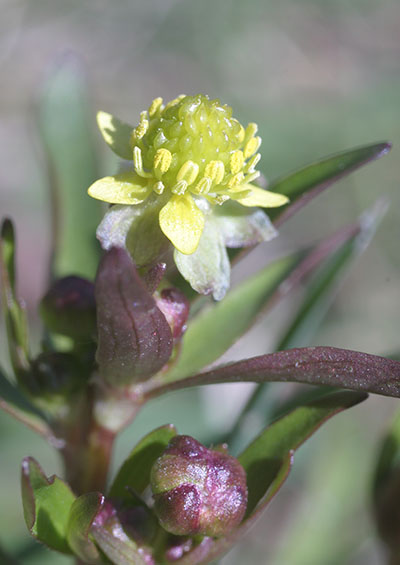 Just for the counterpoint, I sought out the aconite flower that I’d photographed
Just for the counterpoint, I sought out the aconite flower that I’d photographed  I don’t think the red dead-nettle (Lamium purpureum,) among the
I don’t think the red dead-nettle (Lamium purpureum,) among the 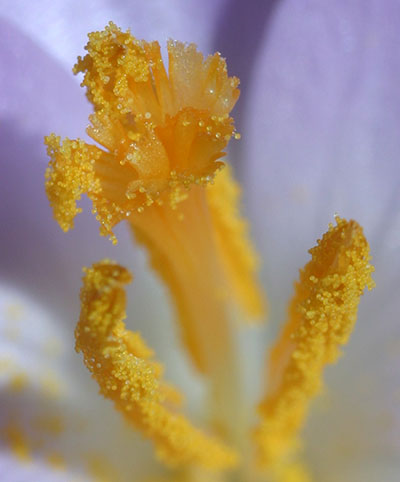 I close with a tight macro shot of The Girlfriend’s Younger Sprog’s crocus, which I may try to get out tomorrow morning and make another attempt at an
I close with a tight macro shot of The Girlfriend’s Younger Sprog’s crocus, which I may try to get out tomorrow morning and make another attempt at an